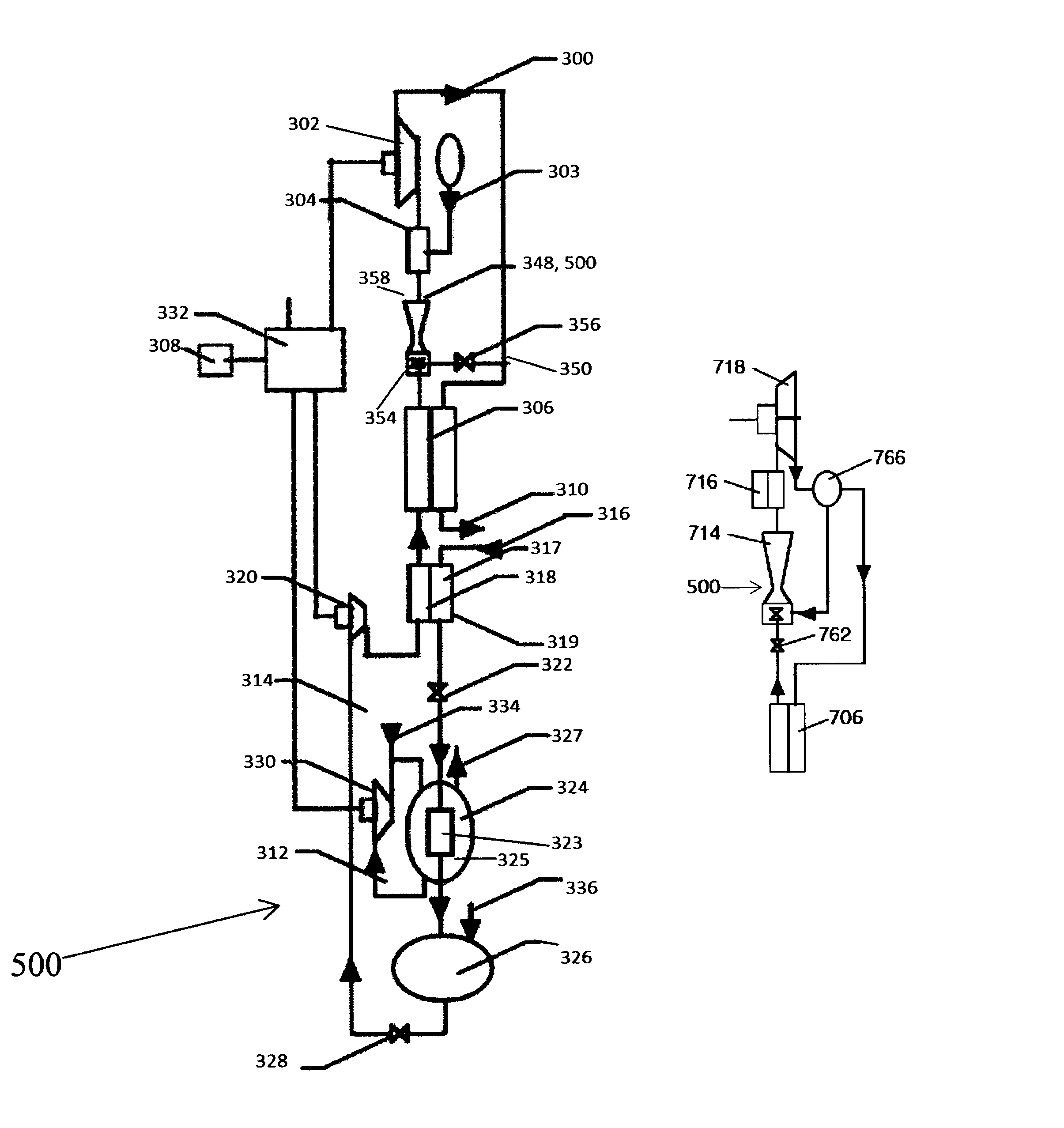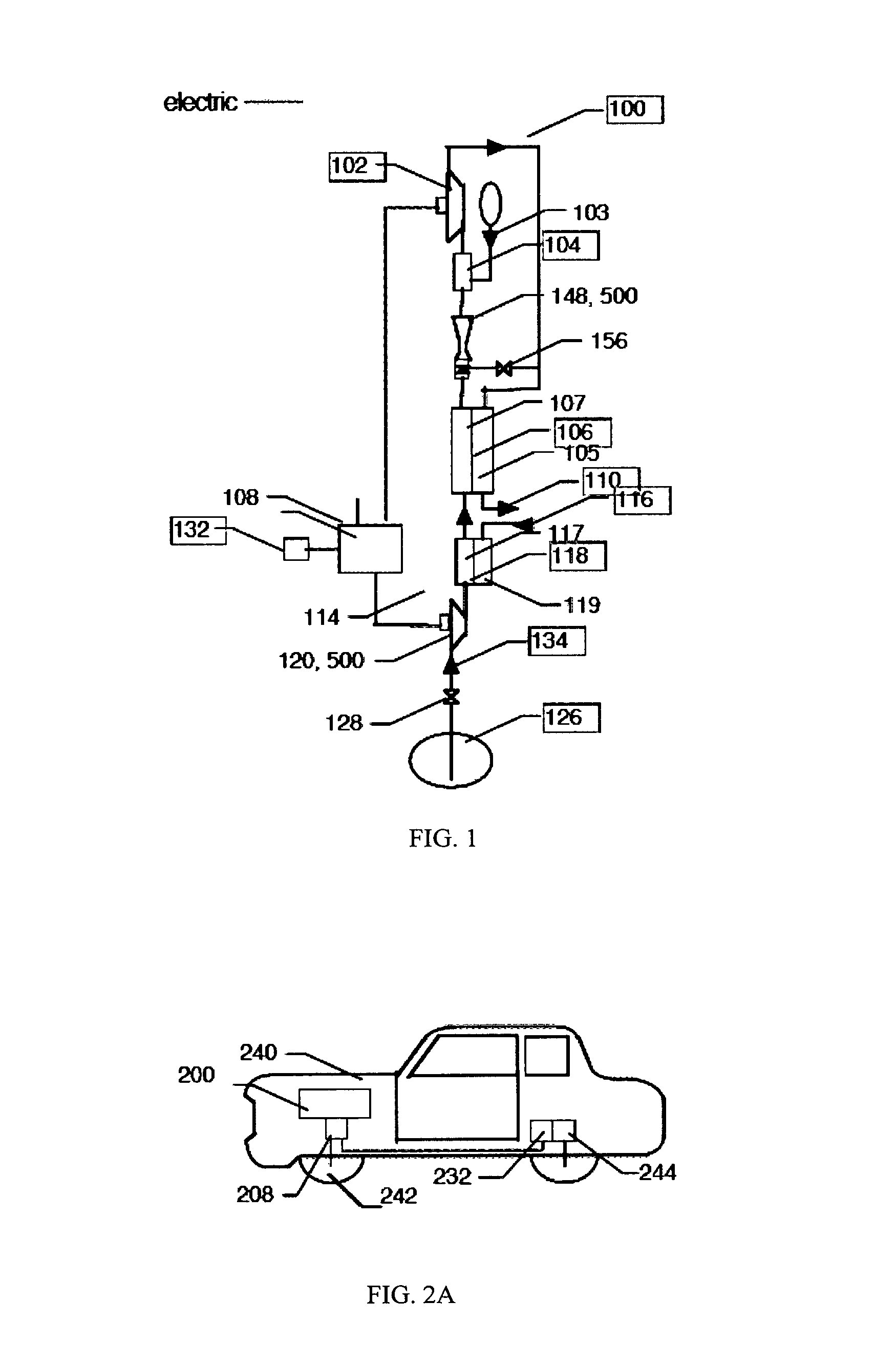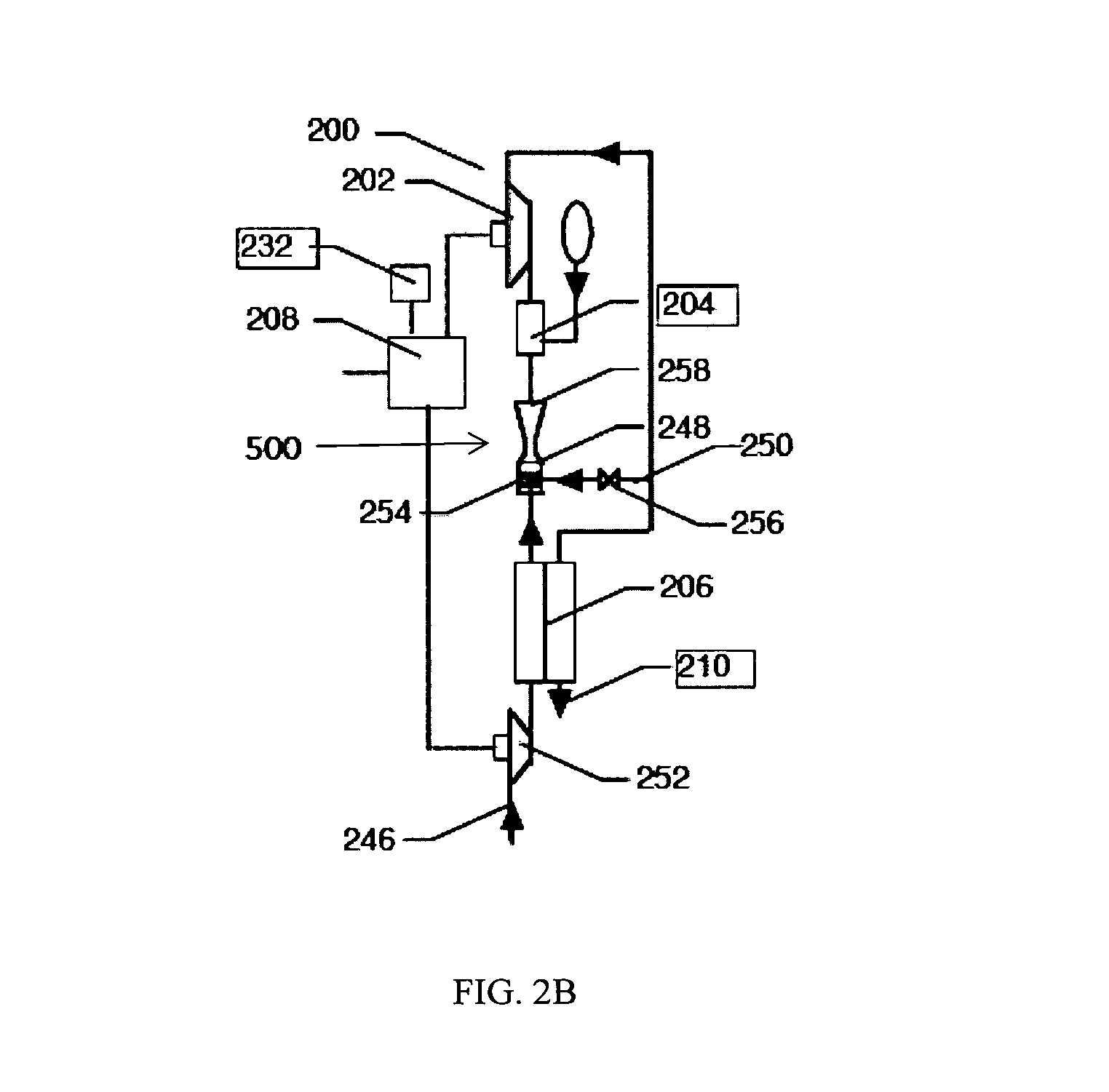Prime mover with recovered energy driven compression of the working fluid
a working fluid and moving device technology, applied in the direction of engine manufacturing, mechanical equipment, machines/engines, etc., can solve the problems of high heat exchanger terminal temperature difference relative, rotor stress limitation, and inefficient motor vehicle and stationary distributed electric generation size range, etc., to reduce size and complexity, reduce the effect of compression operation and increasing thermodynamic cycle efficiency
- Summary
- Abstract
- Description
- Claims
- Application Information
AI Technical Summary
Benefits of technology
Problems solved by technology
Method used
Image
Examples
Embodiment Construction
[0033]Referring first to FIG. 1, a schematic illustrating a preferred embodiment of a gas turbine 100 of the present invention is provided. Gas turbine 100 circulates a working fluid and creates energy through the various heating, cooling, and compression of the working fluid. The working fluid is preferably air, but may also be nitrogen, nitric oxide, argon, or neon. Gas turbine 100 includes at least turbine-generator 102, air heater 104, recuperator 106, and working fluid compression means 500. Working fluid compression means 500 are means for compressing and cooling the working fluid and supplying the compressed working fluid to air heater 104. Several embodiments of working fluid compression means 500 are identified herein. In some embodiments of working fluid compression means 500, the means supply the compressed working fluid to air heater 104 directly. In other embodiments of working fluid compression means 500, there are intermediary gas turbine features through which the wo...
PUM
 Login to View More
Login to View More Abstract
Description
Claims
Application Information
 Login to View More
Login to View More - R&D
- Intellectual Property
- Life Sciences
- Materials
- Tech Scout
- Unparalleled Data Quality
- Higher Quality Content
- 60% Fewer Hallucinations
Browse by: Latest US Patents, China's latest patents, Technical Efficacy Thesaurus, Application Domain, Technology Topic, Popular Technical Reports.
© 2025 PatSnap. All rights reserved.Legal|Privacy policy|Modern Slavery Act Transparency Statement|Sitemap|About US| Contact US: help@patsnap.com



